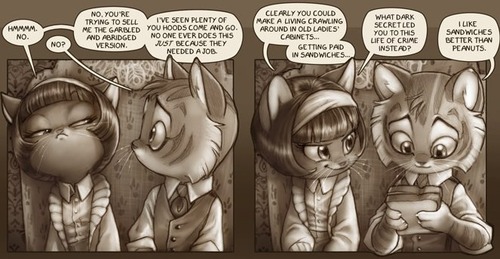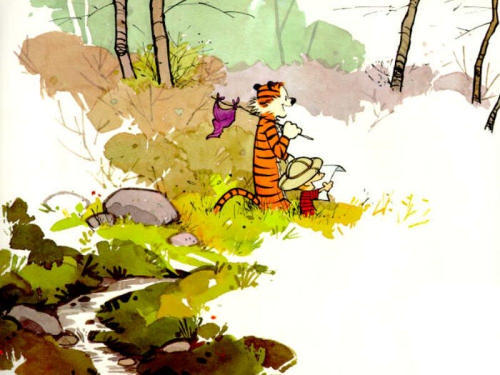Few would argue that there’s no benefit in increasing your verbal vocabulary. Having a larger set of words from which to choose not only allows you to articulate your thoughts more clearly to an audience, it presents a more sophisticated mental framework for the genesis of your own ideas. There’s a greater pool of resources at your disposal. Even if you don’t directly use all the words you’re able, having them there, capable of flowing naturally, multiplies your capacity for expression.
The same is true for drawing skills, especially when it comes to cartooning. As has been discussed before, the nature of the visual narrative is that a cartoonist is writing with images. The more well-rounded the skills of that artist, the more diverse and effective the visual narrative can become. Draftsmanship, in particular, can be defined as the capacity to effectively illustrate, regardless of context.
Clarity of Expression
This is the most obvious advantage. Being able to draw a variety of things well means the tools at your disposal are effective and diverse. For example, being able to draw figures is good, but being able to draw an infinite number of variations of that figure means you’re able to instinctively select the most appropriate pose/gesture/etc. for a scene.
Style is Grounded in Realism
While this is a fairly simple concept, you’d be surprised how often it’s overlooked. Most comics don’t benefit from extreme realism, but the ability to render things realistically strengthens and expands your capacity to stylize your art. If, for example, you’re poor at drawing hands, any attempt to stylize or minimalize the details in cartoon hands are going to be limited, in both style and expressiveness.
Learning to draw based exclusively on the drawings of others (like, say, manga) is going to severely limit your skills, because you’re not actually learning to draw the forms upon which the style is based. You have to know the rules before you can adequately break them.
Visual Flexibility = Mental Flexibility
In short, the more things you can draw intuitively, the more creative you can become. It’s true! When sketching or even doodling, our brains tend to default to shapes and forms we find easiest to draw; expanding our visual vocabulary expands the amount of default forms we can draw, and by extension, the diversity of concepts that can easily flow while brainstorming.
Often, being able to draw new things presents us with ideas we’d otherwise never consider. Also, simply being comfortable with drawing more things means you’re instinctively more likely to try new things. This applies to both visual design (coming up with new objects/locations) as well as raw ideas. You may not get an idea to write a scene/comic/joke about an Aztec flying machine unless you were comfortable drawing those basic forms. Likewise, without an artist having the prerequisite drawing experience, he or she may not get the idea to set a scene in a 17th century pirate cove rather than a college dorm room. It’s not so much that a less well-rounded artist couldn’t draw these things, it’s that he or she is less likely to even consider it, as it’s outside the comfort zone. It’s important to push our boundaries, but if we’re too uncomfortable with every visual element of a project, ideas aren’t going to flow naturally, and we’re actually incapable of challenging ourselves effectively.
If you look for it, you can tell when an artist is extremely skilled, regardless of how complex or simple their style may be. They challenge themselves, and their art and writing is dynamic:
A strong vocabulary means not just having tools at your disposal, but being comfortable using them. Even if you’re drawing something as simple as a stickman comic, having a foundation of strong draftsmanship expands your creative potential a hundredfold.




